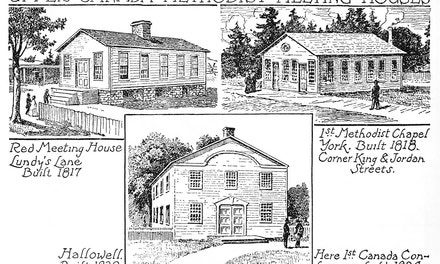Early Houses, Niagara-on-the-lake
Remarks
C.W. Jefferys' notes about this picture from The Picture Gallery of Canadian History Volume 2
A full account of Gourlay's life and of his trial is given in Robert Fleming Gourlay, by Justice W. R. Riddell, in Vol. XIV, Ontario Historical Society, Papers and Records.
In Travels through part of the United States and Canada in 1818-1819, by John M. Duncan, Vol. II, pp. 107-8, is a description of the jail. It was on the lower floor, "the cells surround and open from the hall, which leads to the court room. The partitions and doors of the cells are composed of pieces of oak firmly bolted together; the doors are about 9 inches thick, consisting of 2 thicknesses of wood with a sheet of iron between them. Some of the debtors' apartments have a small window, but the criminals have no light but from a small semi-circular opening in the doors. Debtors' cells have fire-places, but criminals have only a stove in the hall, from which no perceptible warmth can reach them."
The building was used as a court house and jail until 1847: from that date until 1862 as a jail only. In 1869 it was bought by Miss Rye, who established in it a home for orphan English girls, and as such was occupied for twenty-five years.
Published References
- Jefferys, Charles W. 1945 The Picture Gallery of Canadian History Volume 2, p.208




Comments